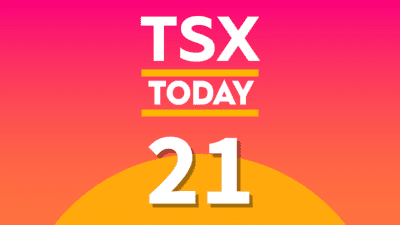April’s federal budget contained plenty of good news for investors concerned about high taxes on various forms of investment income. We already covered in this space the issue of expanded contribution room for tax-free savings accounts (TFSAs).
The other big win, for those already in retirement or those planning for it, was reduced annual withdrawal rates on registered retirement income funds (RRIFs). RRIFs are of course what most RRSPs turn into eventually.
RRIFs: A primer
RRSPs are a tax-advantaged wealth accumulation vehicle that entice workers with upfront tax deductions on contributions. But eventually, an RRSP must be collapsed, converted to an annuity, or – the most popular option – converted to an RRIF.
The only problem is that with RRIFs, the tax piper that was held at bay during the RRSP years must finally be paid. It makes no sense to cash out and pay almost half in tax, so most annuitize or go the RRIF route, which defers a lot of the tax hit until it’s withdrawn in future years.
That future begins at age 71, even though you can set up an RRIF as early as age 60, beginning at an annual withdrawal rate of 3.33%. But few do so, as it makes more sense to take advantage of the flexibility of RRSP withdrawals in your 60s.
Unfortunately, once you hit 71, there’s no element of choice. From then on, Ottawa mandates minimum annual RRIF withdrawal amounts, which are taxed just like earned income. This often comes as a shock for seniors, particularly as until recently, the minimum withdrawal rates were considerably higher than the investment returns on offer by bonds or indeed most stock dividends.
Ottawa’s response
Fortunately, after much hue and cry by the financial industry and senior lobby groups like CARP, Ottawa listened and reduced the minimum withdrawal amounts on RRIFs for seniors between the ages of 71 and 94. As KCM Wealth president Adrian Mastracci recently explained on the Financial Independence Hub, the minimum for someone aged 71 has dropped from the previous 7.38% to a more reasonable 5.28%. The rates still rise gradually until one’s mid-90s, but across the board the minimums have fallen.
Thus an 80-year-old’s minimum RRIF withdrawal has fallen from the previous 8.75% to 6.82%, and an 84-year-old’s falls from 9.93% to 8.08%
True, these are still high withdrawal rates — and it still means most seniors will be gradually breaking into capital, although Ottawa says the level of capital preservation is now 50% better than it would have been under the previous schedule, for those who live well into their 90s.
Not far enough
On the other hand, as financial planner Tim Paziuk also pointed out, the new withdrawal rates are only 26% lower than before. “I still don’t think that goes far enough if someone is earning less than 3%,” says Paziuk, president of Victoria, BC-based TPC Financial Group. He says Ottawa should really eliminate RRIF minimum withdrawals altogether “and let individuals manage their own finances.”
Keep in mind, however, our earlier column here on TFSAs. True, at the above withdrawal rates, you will have to pay tax on withdrawals, but there’s no rule saying you then have to spend the proceeds. That new $10,000 annual TFSA amount the budget also gave us can still be used by seniors to shelter the net (after-tax) proceeds of the forced RRIF withdrawals.
Remember, even though you can’t contribute to an RRSP after 71, no such rule applies to seniors when it comes to the TFSA. If they live to 110, they can keep contributing the annual maximum to the TFSA, so the name of the game is to gradually draw down the RRIF and convert the proceeds to a TFSA, in a similar manner as non-registered savings can be converted to TFSAs.
The upside
One nice thing about the new lower minimums is it means dividend-paying foreign – especially U.S. – stocks can stay longer in a RRIF. Because U.S. dividends are highly taxed in Canada just liked earned income or interest income, U.S. stocks are best held inside RRSPs and ultimately RRIFs. So the new lower forced minimums means in effect that you can hold such stocks longer in tax shelters like the RRIF.
Given extended life expectancies and the eventual rise of inflation, this may prove to be a good inflation/longevity hedge for Canadian seniors who don’t succumb to the temptation of putting too much of their nest eggs into lower-yielding bonds.







